When you are working with large documents in Adobe InDesign, using cross-references is an extremely helpful tool. This feature allows you to reference other points in the document without having to manually update the page numbers. In this guide, I will show you how to effectively use cross-references, what options the software offers, and what pitfalls to consider.
Key insights
- Cross-references automatically update when changes are made to the document.
- You can choose between paragraph and text anchor cross-references.
- Custom cross-reference formats allow you personal design options.
- Be aware of possible performance issues in older versions of InDesign.
Step-by-step guide
1. Open the cross-reference function
To create cross-references, you first need to open the cross-reference panel. Navigate to Window → Type and Tables → Cross-references. This opens the palette where you can manage your cross-references.

2. Insert cross-reference
To create a new cross-reference, go to the cross-references panel menu and select Insert Cross-reference. Here you have the choice between two types of cross-references: paragraph cross-references and text anchor cross-references. We will initially focus on the paragraph cross-reference, as this is usually the simplest solution.

3. Select paragraph
Select the paragraph you want to reference. In our example, we want to reference the chapter "Color Fields," which is located two pages earlier. You should select the corresponding chapter heading, in this case, Heading 2.
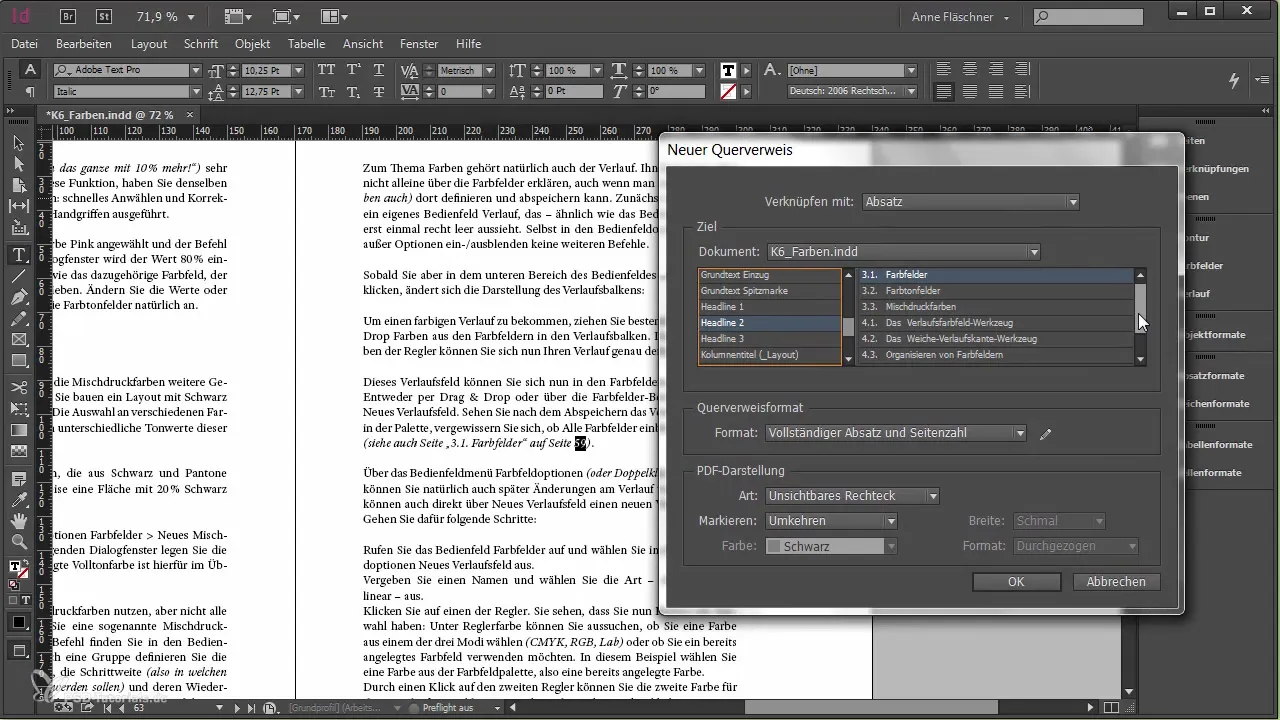
4. Choose cross-reference formats
Once you have selected the appropriate paragraph, you can choose the cross-reference format. The available formats are limited, but you have the option to select one that you like best. Click on the format to see a preview.
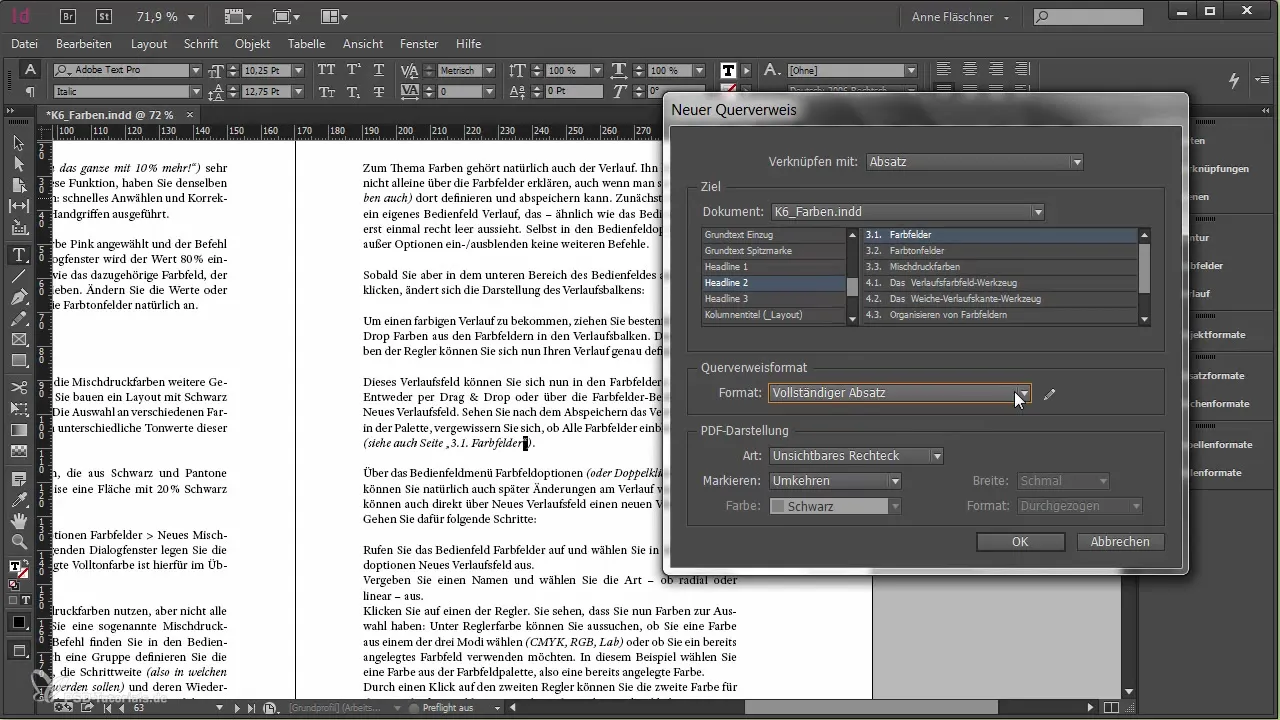
5. Create a new cross-reference format
If you want to create your own cross-reference format, click on the small pencil next to the cross-reference formats. Here you can add new formats based on your individual needs. This is important to ensure a consistent appearance throughout your entire project.

6. Format the cross-reference
Give your new cross-reference format a meaningful name and assemble the individual components. For example, you can include the page number and the paragraph text. The result could then be: “Page 59 in the chapter Color Fields.”
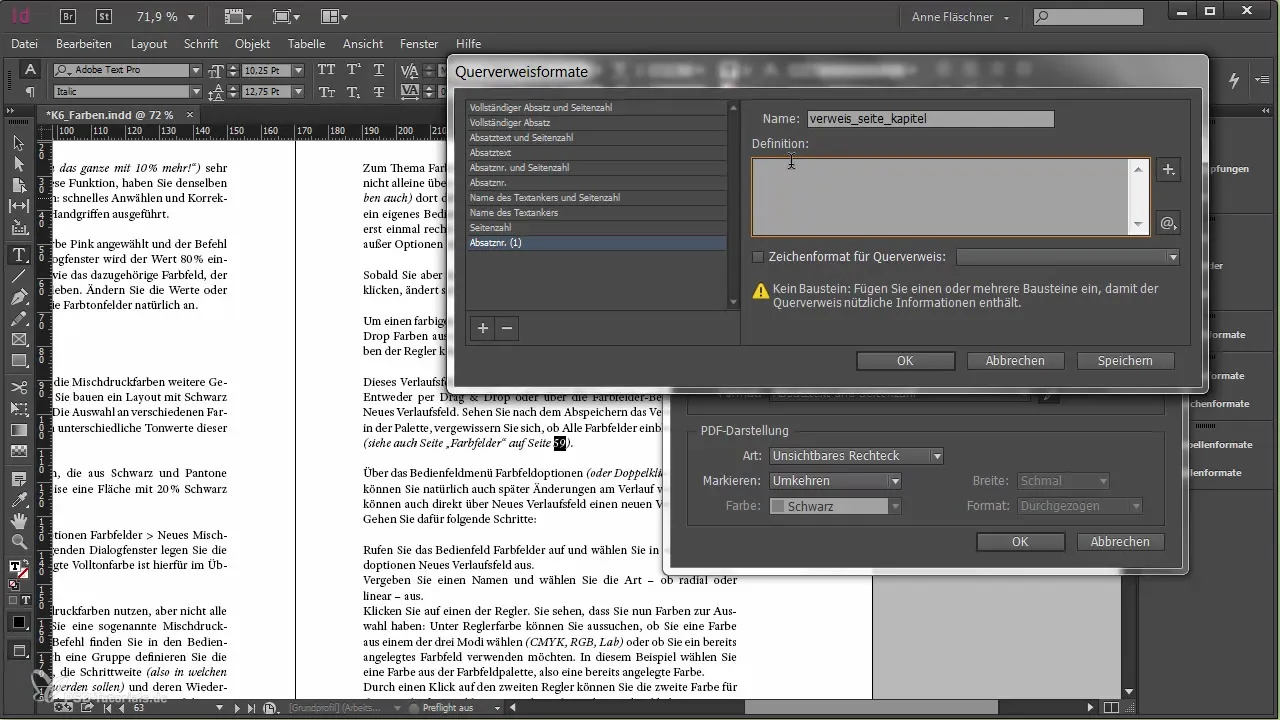
7. Set representation in PDF
You also have the option to set how the cross-reference will be represented in the PDF. Choose between a visible or invisible rectangle, depending on your needs.
8. Save and update the document
After creating and formatting your cross-reference, you should save and close the document, then reopen it to ensure that the cross-references are updated correctly. If everything is set up correctly, you should now automatically see the updated page numbers.
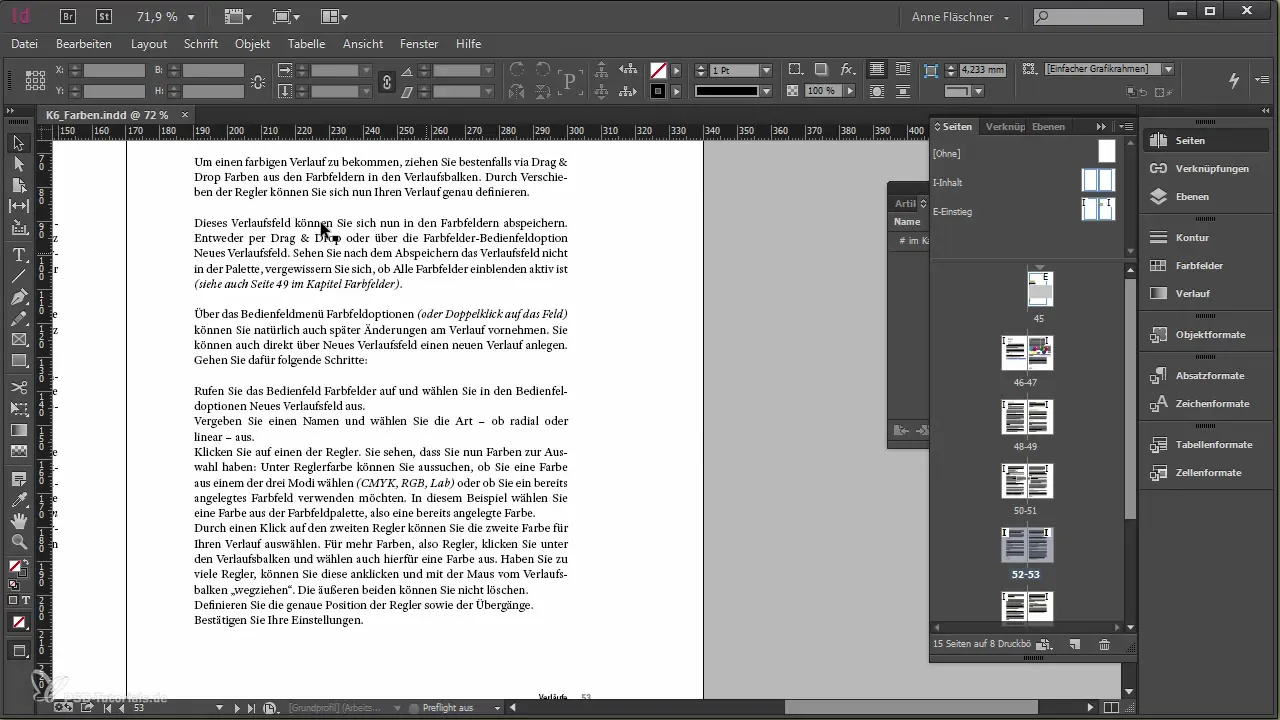
9. Use cross-references with text anchors
In addition to paragraph cross-references, you can also use text anchors. First, create a new text anchor by navigating to New Hyperlink Destination → Text Anchor. Give the text anchor a meaningful name to make it easier to find and use later.

10. Use text anchors in cross-references
In the cross-reference menu, change the type to text anchor and select the desired text anchor. You can then also choose or customize a format here. This is particularly useful when you want to reference specific paragraphs within large texts.

11. Be mindful of performance tips
Be aware that using cross-references in older versions of InDesign (e.g., CS5) can negatively impact performance. Make sure you are using the latest version to avoid unnecessary delays.
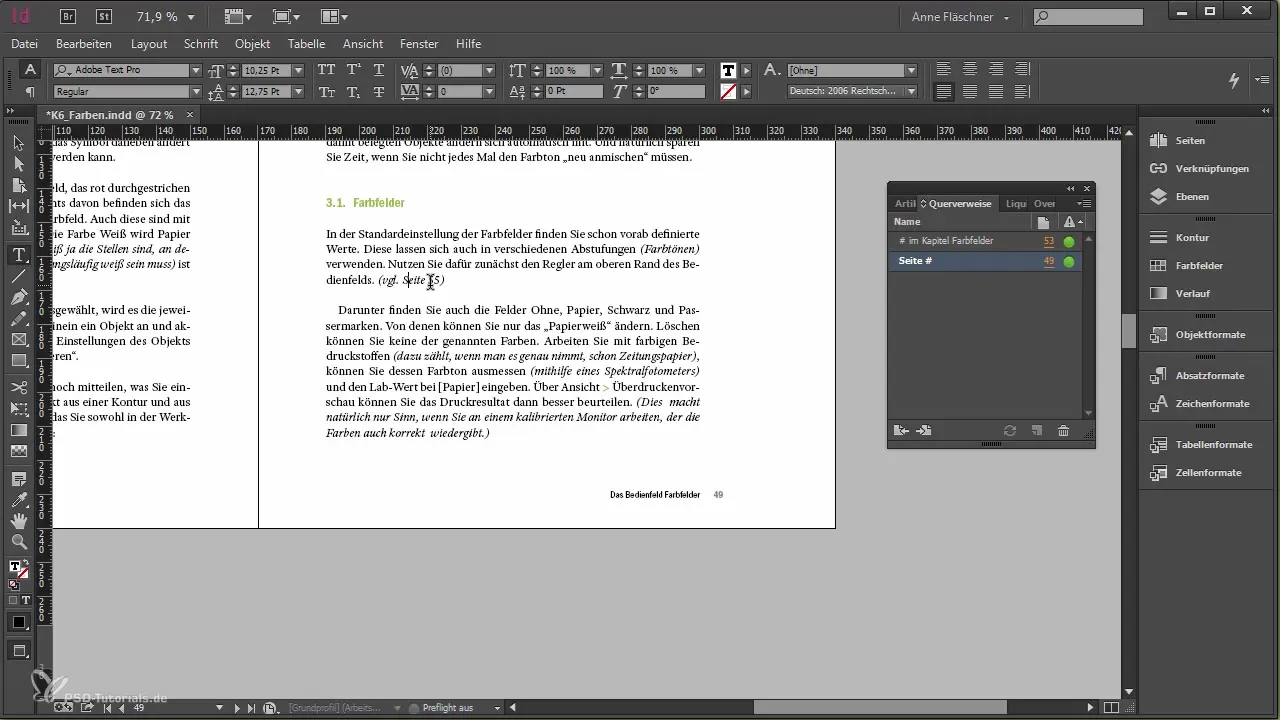
12. Use for tables of contents
An interesting additional application of the cross-reference function is the creation of an automatic table of contents. You can use cross-references to create a dynamic overview of all chapters or sections in your document.
Summary - Effectively using cross-references in Adobe InDesign
In this tutorial, you learned how to effectively create and use cross-references in Adobe InDesign. You know the differences between paragraph and text anchor cross-references and how to design your own cross-reference formats. It was also mentioned how important it is to update the cross-references and consider performance aspects.
Frequently Asked Questions
How do I insert a cross-reference in InDesign?Go to Window → Type and Tables → Cross-references and then select "Insert Cross-reference" from the menu.
What are the differences between paragraph and text anchor cross-references?Paragraph cross-references refer to complete paragraphs, while text anchor cross-references link to specific points.
Can I create my own cross-reference formats?Yes, you can create your own formats through the cross-reference format menu and customize them to your liking.
Do cross-references affect the performance of InDesign?Yes, in older versions, using cross-references can negatively impact performance.
How can I use cross-references for a table of contents?You can use cross-references to automatically reference different chapters in your document, creating a dynamic table of contents.


